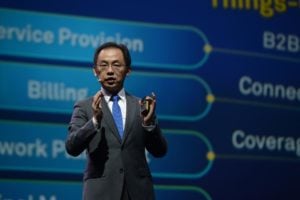In the keynote address delivered at the Global Mobile Broadband Forum in Tokyo, Huawei’s Executive Director and President of Products and Solutions Ryan Ding asked the telecom industry to prepare for 5G. He stressed on three main areas to focus -- infrastructure, operations, and ecosystem development. According to Ding, these are the areas that determine the success of telecom industry.

In the keynote titled “On the Road to 5G”, Ding pointed out that the telecom industry should shift its focus from network-centric to application-centric and from person-centric to thing-centric. Although the process of shifting will take time for the industry, telecom service providers cannot wait till 2020, Ding said.
"We can't wait for it to happen. We have to make it happen.”
The carriers with all-cloud networks will be perfectly positioned when 5G arrives, according to Ding. “Solutions such as CloudRAN, CloudWAN, and CloudEdge will enable them to build an all-cloud, fully elastic network architecture that encompasses access, transmission, and core. And during the process of cloudification, they will resolve underlying technical obstacles related to latency, clock accuracy, and performance,” he said.
NB-IoT is another stepping stone to provide ground for new operational capabilities. In the next 3-4 years, carriers can update their systems accordingly by deploying NB-IoT-based services. The operational expertise in IoT will be necessary for the carriers to manage the range of services and connections made possible by 5G.
Also Read: Huawei sets up Global Service Center in Bengaluru to support global telecom customers
In his speech, Ding announced a new five-dimensional standard for measuring the connection experience of IoT-connected devices. The five dimensions are Availability, Bandwidth, Coverage, Delay sensitivity, and Energy efficiency. Huawei has released a white paper describing the standard during the Global MBB Forum.
“Operators will need to work closely with global technology vendors, but they should also guide the development of local ecosystems. By opening up their own platforms, they can innovate in partnership with small, local companies,” Huawei mentioned in a release.















